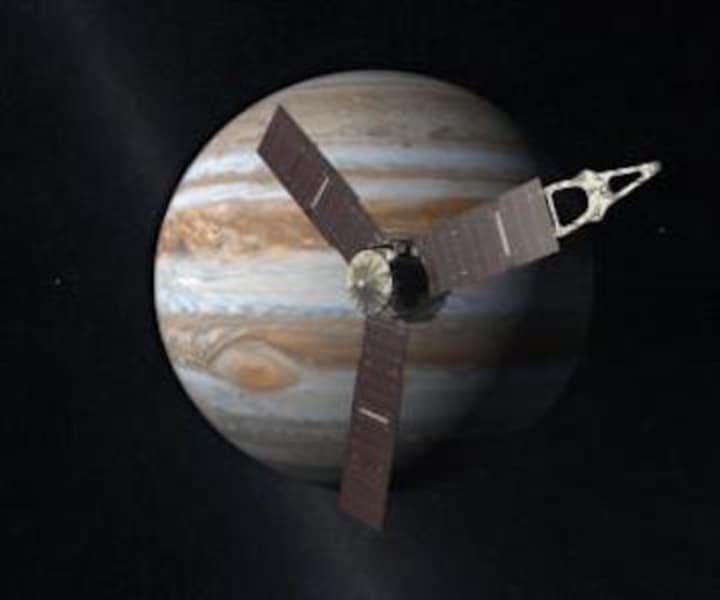The Juno spacecraft will study the giant planet from an elliptical polar orbit, repeatedly diving between the planet and its intense belts of charged particle radiation, coming only 3,000 miles from the cloud tops at its closest approach.
“Independence Day always is something to celebrate, but today we can add to America’s birthday another reason to cheer – Juno is at Jupiter,” NASA Administrator Charlie Bolden said in a statement. “And what is more American than a NASA mission going boldly where no spacecraft has gone before? With Juno, we will investigate the unknowns of Jupiter’s massive radiation belts to delve deep into not only the planet’s interior, but into how Jupiter was born and how our entire solar system evolved.”
Juno's principal goal is to understand the origin and evolution of Jupiter. With its suite of nine science instruments, Juno will investigate the existence of a solid planetary core, map Jupiter's intense magnetic field, measure the amount of water and ammonia in the deep atmosphere, and observe the planet's auroras, NASA officials said in a statement.
Juno will study the giant planet by repeatedly diving between the planet and its intense belts of charged particle radiation, coming within 3,000 miles from the cloud tops at its closest approach.
The mission also will let NASA take a giant step forward in understanding how giant planets form and the role they played in putting together the rest of the solar system. As the primary example of a giant planet, Jupiter also can provide critical knowledge for understanding the planetary systems being discovered around other stars, they added.
“This is the one time I don’t mind being stuck in a windowless room on the night of the Fourth of July,” said Scott Bolton, principal investigator of Juno from Southwest Research Institute in San Antonio. “The mission team did great. The spacecraft did great. We are looking great. It’s a great day.”
The Juno spacecraft launched on Aug. 5, 2011, from Cape Canaveral Air Force Station in Florida. JPL manages the Juno mission for NASA. Juno is part of NASA's New Frontiers Program, managed at NASA's Marshall Space Flight Center in Huntsville, Ala., for the agency’s Science Mission Directorate. Lockheed Martin Space Systems in Denver built the spacecraft. The California Institute of Technology in Pasadena manages JPL for NASA.
More information on the Juno mission is available by clicking here.
Click here to follow Daily Voice Chappaqua and receive free news updates.



